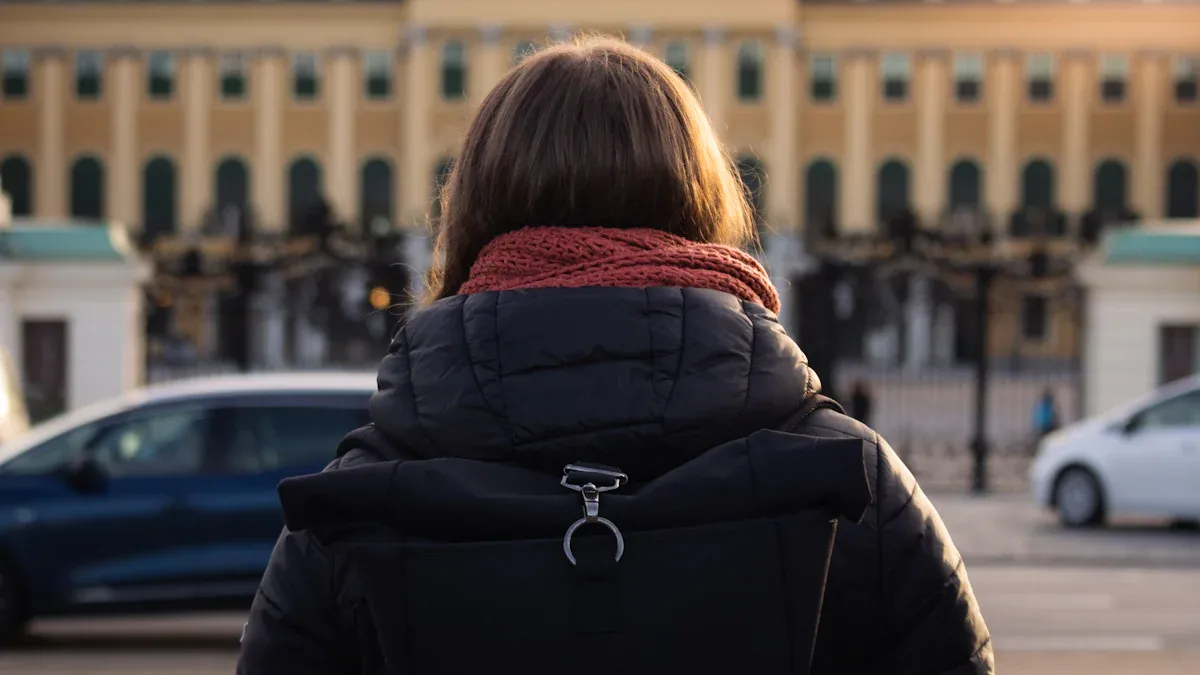How Flashlights Benefit Those Who Live in Areas with Frequent Power Outages

Power outages can disrupt your daily life and compromise your safety. Flashlights provide an immediate solution, offering light when you need it most. In areas like Louisiana and Northern Michigan, where outages often last over eight hours due to heavy precipitation, the benefits of flashlights include reducing risks and ensuring preparedness during these critical moments.
Key Takeaways
Flashlights keep you safe during blackouts by giving steady light. They help prevent accidents and are safer than using candles.
A flashlight helps you see in the dark. It makes finding important things easier and lets you move safely in your house.
Buying good flashlights with strong batteries and tough designs helps you get ready for emergencies like power outages.
Immediate Benefits of Flashlights

Enhancing Safety During Power Outages
Flashlights play a critical role in ensuring your safety during power outages. They provide reliable lighting, helping you avoid accidents caused by tripping over unseen obstacles in the dark. Unlike candles, which pose significant fire hazards, flashlights offer a safer alternative. Studies reveal that candles cause an average of 8,700 home fires annually in the U.S., often leading to injuries or fatalities. Additionally, over 20% of candle-related fire fatalities occur during outages. Flashlights eliminate this risk by providing light without an open flame, making them an essential tool for emergency preparedness.
Providing Mobility and Convenience in the Dark
Navigating your home during an outage becomes much easier with a flashlight. Whether you need to locate essential items, check on family members, or inspect your property, a flashlight ensures you can move safely and efficiently. LED flashlights, in particular, offer bright, long-lasting light, making them ideal for extended power outages. Their portability allows you to carry them anywhere, ensuring you’re never left in the dark. Flashlights also serve as a dependable backup when other lighting systems fail.
Reducing Fire Hazards Compared to Candles
Candles may seem like a quick solution during outages, but their open flames can be dangerous. Placing them near flammable materials increases the risk of house fires. Flashlights, especially those with LED technology, provide a safer and more practical alternative. While they rely on batteries, they do not pose the same immediate fire risks. Investing in flashlights as part of your backup systems enhances safety and reduces the likelihood of accidents during power outages.
Scenarios Highlighting the Benefits of Flashlights

Navigating Dark Spaces Safely During an Outage
Flashlights are indispensable when navigating dark spaces during a power outage. They provide immediate illumination, allowing you to move safely through your home or surroundings. For example:
During Hurricane Katrina, the Johnson family used their flashlight to navigate flooded streets and guide rescuers to their location.
A group of hikers relied on their flashlight to find their way back to a trail after dark and signal for a rescue helicopter.
A motorist used a flashlight to inspect their vehicle during a nighttime breakdown, ensuring they could signal for help effectively.
These real-life examples highlight how flashlights enhance mobility and safety in challenging situations. LED flashlights, with their bright and long-lasting light, are particularly effective for such scenarios. Their portability ensures you can carry them wherever needed, making them an essential part of your emergency preparedness plan.
Signaling for Help in Emergency Situations
Flashlights are vital tools for signaling distress during emergencies. Their intense beams can attract attention, even in low-visibility conditions. You can use a flashlight to flash SOS signals or direct rescuers to your location. Here are some effective ways to use flashlights in emergencies:
Flash the beam repeatedly to signal distress.
Combine the flashlight with tools like whistles to amplify your call for help.
Use the light to guide rescuers in dark or obstructed areas.
These methods have proven effective in real-life situations, such as car breakdowns or outdoor incidents. A flashlight’s ability to cut through darkness makes it a reliable backup for emergencies, ensuring your safety and increasing your chances of being found quickly.
Staying Prepared During Natural Disasters
Natural disasters often lead to prolonged power outages, making flashlights a critical part of your emergency preparedness. They provide light in the dark, help you navigate safely, and allow you to locate essential survival items like food or tools. Flashlights also ease tension and fear, especially for children and pets, by creating a sense of security. During nighttime evacuations, they illuminate pathways, reducing the risk of accidents. Additionally, you can use them to signal your location to rescuers or search for others in need. LED flashlights, with their long battery life and durability, are ideal for these situations. Including flashlights in your backup systems ensures you are ready to face any disaster with confidence.
Choosing and Maintaining the Right Flashlight
Key Features to Consider (Battery Life, Brightness, Durability)
When selecting a flashlight, focus on features that enhance its reliability during an outage. Look for models with long battery life to ensure extended usability. Adjustable brightness settings allow you to conserve power while providing sufficient illumination. Durability and water resistance are essential for challenging conditions, especially during emergencies. Energy-efficient LED technology maximizes battery performance, making it ideal for prolonged use. An ergonomic design ensures ease of handling, even for extended periods. These features make flashlights a dependable tool for your backup systems and emergency preparedness.
Types of Flashlights for Different Needs
Different types of flashlights cater to various requirements. Rechargeable and non-rechargeable models each have unique advantages. The table below highlights their differences:
Feature | Rechargeable Flashlights | Non-Rechargeable Flashlights |
|---|---|---|
Brightness | Improved LED technology for bright output | LED technology for bright output |
Battery Life | Longer runtime | Shorter runtime, may need spare batteries |
Charging | Requires electricity | No charging needed |
Environmental Impact | Environmentally friendly | Contributes to waste |
For everyday use, LED flashlights are energy-efficient and durable. Rechargeable models suit extended tasks, while non-rechargeable ones serve as reliable backups. For outdoor activities, rechargeable flashlights work well for long trips, while non-rechargeable ones are better for short outings. In emergencies, both types play a crucial role in ensuring safety.
Tips for Proper Maintenance and Storage
Proper maintenance ensures your flashlight remains functional during emergencies. Store it in a cool, dry place to prevent damage from moisture or extreme temperatures. Avoid direct sunlight to protect the materials and battery. Regularly check for wear or damage and clean the lens to maintain brightness. Replace worn parts immediately. Remove batteries during long periods of inactivity to prevent leakage. Use a protective case for high-end models to extend their lifespan. Following these practices keeps your flashlight ready for any outage.
Flashlights are indispensable for ensuring safety and preparedness during power outages. They enhance personal safety, provide reliable backup lighting, and aid in emergencies. Investing in high-quality flashlights offers long-term benefits, such as durability and reliability. Evaluate your preparedness by maintaining emergency supplies, assembling a backup kit, and conducting regular family drills.
Tip: Regularly test your flashlights and backup systems to ensure they function when needed most.
FAQ
How many flashlights should you keep as part of your emergency kit?
You should keep at least two flashlights in your emergency kit. This ensures you have a reliable backup in case one fails during a power outage.
What type of flashlight works best during severe weather conditions?
LED flashlights with water-resistant features work best during severe weather. They provide bright light and durability, ensuring reliable performance in challenging conditions.
How often should you check your flashlights for functionality?
Check your flashlights monthly. This ensures they remain functional and ready for use. Replace batteries or perform maintenance as needed to keep them in optimal condition.
See Also
Why Rechargeable Flashlights Enhance Community Safety Efforts
How EDC Flashlights Prove Useful in Everyday Situations
Essential LED Flashlights for Every Household's Convenience
Our Emergency Flashlight: Designed for Long-Lasting Durability
